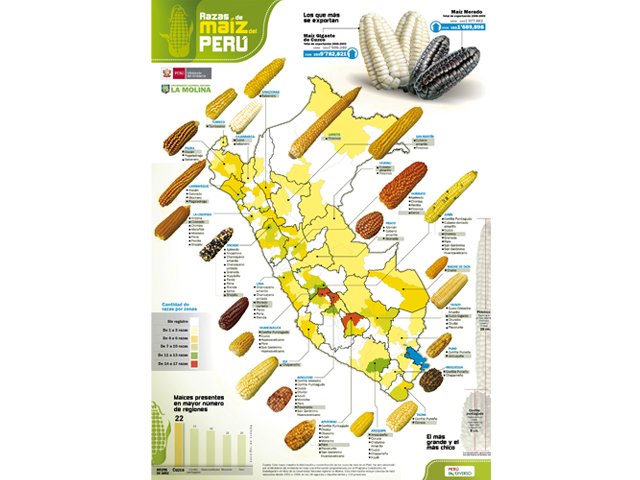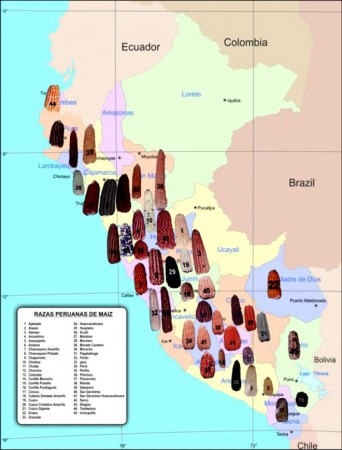A very attractive map of the races of Maize found in Peru posted on Facebook sent me scurrying for the source. Turns out it was put out by the Ministry of the Environment last year. Here it is:
Much prettier than another version that one can also find online:
Of course, these types of maps underplay the diversity that you can find in any one locality within Peru, which can also be considerable. Nice to look at nonetheless.

